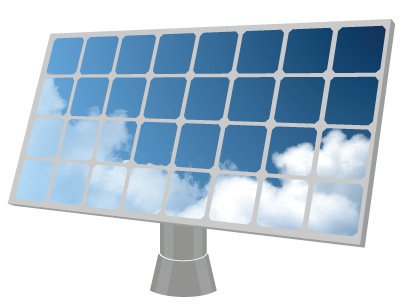It is the possibility for any kind of electricity consumer to also produce part or all of the electricity at the same location.
Is a compensation scheme that allows electricity consumers to reduce their electricity bills by giving them credit for the electricity produced over a certain period of time.
When sunlight strikes a photovoltaic cell, direct current electricity is generated. An inverter is a device which converts direct current to alternating current electricity. Moreover, an inverter is required to connect a photovoltaic system to the power grid.
Photovoltaic systems use cells to convert sunlight into electricity. Photovoltaic cells can be made from different so-called semiconductor materials, of which silicon is the most widely used today. The word photovoltaic is composed of two terms: Photo – Photon which means “light” and Voltaic from “Volt” which is the unit used to measure electric potential at a given point.
It is the rate at which electric energy is transferred by an electric circuit. Solar electricity systems are given a rating in kilowatts peak (Kwp). This is essentially the rate at which it generates energy at peak performance for example at noon on a sunny day.
The amount of electricity used (or generated) over time measured typically in Kwh (kilowatt-hour).

